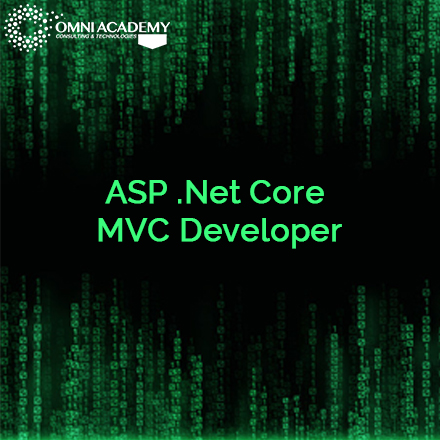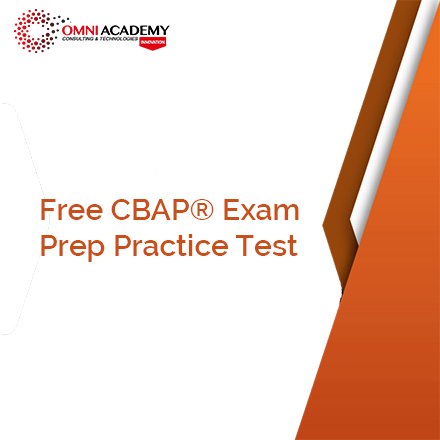Transact-SQL Querying
T-SQL or Transact SQL is a query language specific to the Microsoft SQL Server product. It can help perform operations like retrieving data from a single row, inserting new rows, and retrieving multiple rows. It is a procedural language that is used by the SQL server.
Businesses use tools like these to help sift through large databases of information to derive meaningful or relevant data. Professionals with this skill set are highly sought after worldwide, across industries, and for businesses of any size. Professionals completing the 20761C: Querying Data with Transact-SQL 2016 training course are able to use Transact-SQL to query data based on organizational needs.
Course Key Learnings
After completing this course, students will be able to:
- Describe key capabilities and components of SQL Server.
- Describe T-SQL, sets, and predicate logic.
- Write a single table SELECT statement.
- Write a multi-table SELECT statement.
- Write SELECT statements with filtering and sorting.
- Describe how SQL Server uses data types.
- Write DML statements.
- Write queries that use built-in functions.
- Write queries that aggregate data.
- Write subqueries.
- Create and implement views and table-valued functions.
- Use set operators to combine query results.
- Write queries that use window ranking, offset, and aggregate functions.
- Transform data by implementing pivot, unpivot, rollup and cube.
- Create and implement stored procedures.
- Add programming constructs such as variables, conditions, and loops to T-SQL code.
Course Outline
Module 1: Introduction to Microsoft SQL Server
This module introduces SQL Server, the versions of SQL Server, including cloud versions, and how to connect to
SQL Server using SQL Server Management Studio.
Lessons for module 1
- The Basic Architecture of SQL Server
- SQL Server Editions and Versions
- Getting Started with SQL Server Management Studio
After completing module 1, you will be able to:
- Describe relational databases and Transact-SQL queries.
- Describe the on-premise and cloud-based editions and versions of SQL Server.
- Describe how to use SQL Server Management Studio (SSMS) to connect to an instance of SQL Server, explore the databases contained in the instance, and work with script files that contain T-SQL queries.
Module 2: Introduction to T-SQL Querying
This module describes the elements of T-SQL and their role in writing queries. Describe the use of sets in SQL Server. Describe the use of predicate logic in SQL Server.
Describe the logical order of operations in SELECT statements.
Lessons for module 2
- Introducing T-SQL
- Understanding Sets
- Understanding Predicate Logic
- Understanding the Logical Order of Operations in SELECT
statements
After completing module 2, you will be able to:
- Describe the role of T-SQL in writing SELECT statements.
- Describe the elements of the T-SQL language and which elements will be useful in writing queries.
- Describe the concepts of the set theory, one of the mathematical underpinnings of relational databases, and to help you apply it to how you think about querying SQL Server
- Describe predicate logic and examine its application to querying SQL Server.
- Explain the elements of a SELECT statement, delineate the order in which the elements are evaluated, and then apply this understanding to a practical approach to writing queries.
Module 3: Writing SELECT Queries
This module introduces the fundamentals of the SELECT statement, focusing on queries against a single table.
Lessons for module 3
- Writing Simple SELECT Statements
- Eliminating Duplicates with DISTINCT
- Using Column and Table Aliases
- Writing Simple CASE Expressions
After completing module 3, you will be able to:
- Describe the structure and format of the SELECT statement, as well as enhancements that will add functionality and readability to your queries
- Describe how to eliminate duplicates using the DISTINCT clause
- Describe the use of column and table aliases
- Understand and use CASE expressions
Module 4: Querying Multiple Tables
This module describes how to write queries that combine data from multiple sources in Microsoft SQL Server.
Lessons for module 4
- Understanding Joins
- Querying with Inner Joins
- Querying with Outer Joins
- Querying with Cross Joins and Self Joins
After completing module 4, you will be able to:
- Explain the fundamentals of joins in SQL Server
- Write inner join queries
- Write queries that use outer joins
- Use additional join types
Module 5: Sorting and Filtering Data
This module describes how to implement sorting and filtering.
Lessons for module 5
- Sorting Data
- Filtering Data with Predicates
- Filtering Data with TOP and OFFSET-FETCH
- Working with Unknown Values
After completing module 5, you will be able to:
- Explain how to add an ORDER BY clause to your queries to control the order of rows displayed in your query’s output
- Explain how to construct WHERE clauses to filter out rows that do not match the predicate.
- Explain how to limit ranges of rows in the SELECT clause using a TOP option.
- Explain how to limit ranges of rows using the OFFSET-FETCH option of an ORDER BY clause.
- Explain how three-valued logic accounts for unknown and missing values, how SQL Server uses NULL to mark missing values, and how to test for NULL in your queries.
Module 6: Working with SQL Server Data Types
This module introduces the data types SQL Server uses to store data.
Lessons for module 6
- Introducing SQL Server Data Types
- Working with Character Data
- Working with Date and Time Data
After completing module 6, you will be able to:
- Explore many of the data types SQL Server uses to store data and how data types are converted between types
- Explain the SQL Server character-based data types, how character comparisons work, and some common functions you may find useful in your queries
- Describe data types that are used to store temporal data, how to enter dates and times so they will be properly parsed by SQL Server, and how to manipulate dates and times with built-in functions.
Module 7: Using DML to Modify Data
This module describes how to create DML queries, and why you would want to.
Lessons for module 7
- Adding Data to Tables
- Modifying and Removing Data
- Generating automatic column values
After completing module 7, you will be able to:
- Use INSERT and SELECT INTO statements
- Use UPDATE, MERGE, DELETE, and TRUNCATE.
Module 8: Using Built-In Functions
This module introduces some of the many built in functions in SQL Server.
Lessons for module 8
- Writing Queries with Built-In Functions
- Using Conversion Functions
- Using Logical Functions
- Using Functions to Work with NULL
After completing module 8, you will be able to:
- Describe the types of functions provided by SQL Server, and then focus on working with scalar functions
- Explain how to explicitly convert data between types using several SQL Server functions
- Describe how to use logical functions that evaluate an expression and return a scalar result.
- Describe additional functions for working with NULL
Module 9: Grouping and Aggregating Data
This module describes how to use aggregate functions.
Lessons for module 9
- Using Aggregate Functions
- Using the GROUP BY Clause
- Filtering Groups with HAVING
After completing module 9, you will be able to:
- Describe the built-in aggregate function in SQL Server and write queries using it.
- Write queries that separate rows using the GROUP BY clause.
- Write queries that use the HAVING clause to filter groups.
Module 10: Using Subqueries
This module describes several types of subquery and how and when to use them.
Lessons for module 10
- Writing Self-Contained Subqueries
- Writing Correlated Subqueries
- Using the EXISTS Predicate with Subqueries
After completing module 10, you will be able to:
- Describe where subqueries may be used in a SELECT statement.
- Write queries that use correlated subqueries in a SELECT statement
- Write queries that use EXISTS predicates in a WHERE clause to test for the existence of qualifying rows
- Use the EXISTS predicate to efficiently check for the existence of rows in a subquery.
Module 11: Using Table Expressions
Previously in this course, you learned about using subqueries as an expression that returned results to an outer calling query. Like subqueries, table expressions are query expressions, but table expressions extend this idea
by allowing you to name them and to work with their results as you would work with data in any valid relational table. Microsoft SQL Server supports four types of table expressions: derived tables, common table expression (CTEs), views, and inline table-valued functions (TVFs). In this module, you will learn to work with these forms of table expressions and learn how to use them to
help create a modular approach to writing queries.
Lessons for module 11
- Using Views
- Using Inline Table-Valued Functions
- Using Derived Tables
- Using Common Table Expressions
After completing module 11, you will be able to:
- Write queries that return results from views.
- Use the CREATE FUNCTION statement to create simple inline TVFs.
- Write queries that create and retrieve results from derived tables.
- Write queries that create CTEs and return results from the table expression.
Module 12: Using Set Operators
This module introduces how to use the set operators UNION, INTERSECT, and EXCEPT to compare rows between two input sets.
Lessons for module 12
- Writing Queries with the UNION operator
- Using EXCEPT and INTERSECT
- Using APPLY
After completing module 12, students will be able to:
- Write queries that use UNION to combine input sets.
- Write queries that use UNION ALL to combine input sets
- Write queries that use the EXCEPT operator to return
only rows in one set but not another. - Write queries that use the INTERSECT operator to return
only rows that are present in both sets - Write queries using the CROSS APPLY operator.
- Write queries using the OUTER APPLY operator
Module 13: Using Windows Ranking, Offset, and Aggregate Functions
This module describes the benefits to using window
functions. Restrict window functions to rows defined in an
OVER clause, including partitions and frames. Write
queries that use window functions to operate on a window
of rows and return ranking, aggregation, and offset comparison results.
Lessons for module 13
- Creating Windows with OVER
- Exploring Window Functions
After completing module 13, students will be able to:
- Describe the T-SQL components used to define windows,
and the relationships between them. - Write queries that use the OVER clause, with partitioning,
ordering, and framing to define windows - Write queries that use window aggregate functions.
- Write queries that use window ranking functions.
- Write queries that use window offset functions
Module 14: Pivoting and Grouping Sets
This module describes write queries that pivot and unpivot result sets. Write queries that specify multiple groupings with grouping sets
Lessons for module 14
- Writing Queries with PIVOT and UNPIVOT
- Working with Grouping Sets
After completing module 14, students will be able to:
- Describe how pivoting data can be used in T-SQL queries.
- Write queries that pivot data from rows to columns using
the PIVOT operator. - Write queries that unpivot data from columns back to
rows using the UNPIVOT operator. - Write queries using the GROUPING SETS subclause.
- Write queries that use ROLLUP AND CUBE.
- Write queries that use the GROUPING_ID function.
Module 15: Executing Stored Procedures
This module describes how to return results by executing stored procedures. Pass parameters to procedures. Create simple stored procedures that encapsulate a SELECT statement. Construct and execute dynamic SQL with EXEC and sp_executesql.
Lessons for module 15
- Querying Data with Stored Procedures
- Passing Parameters to Stored procedures
- Creating Simple Stored Procedures
- Working with Dynamic SQL
After completing module 15, students will be able to:
- Describe stored procedures and their use.
- Write T-SQL statements that execute stored procedures
to return data. - Write EXECUTE statements that pass input parameters to
stored procedures. - Write T-SQL batches that prepare output parameters
and execute stored procedures. - Use the CREATE PROCEDURE statement to write a
stored procedure. - Create a stored procedure that accepts input parameters.
- Describe how T-SQL can be dynamically constructed.
- Write queries that use dynamic SQL.
Module 16: Programming with T-SQL
This module describes how to enhance your T-SQL code with programming elements.
Lessons for module 16
- T-SQL Programming Elements
- Controlling Program Flow
After completing module 16, students will be able to:
- Describe how Microsoft SQL Server treats collections of
statements as batches. - Create and submit batches of T-SQL code for execution
by SQL Server. - Describe how SQL Server stores temporary objects as
variables. - Write code that declares and assigns variables.
- Create and invoke synonyms
- Describe the control-of-flow elements in T-SQL.
- Write T-SQL code using IF…ELSE blocks.
- Write T-SQL code that uses WHILE.
Course Prerequisties
- Basic knowledge of the Microsoft Windows operating system and its core functionality.
- Working knowledge of relational databases.
Who this course is for:
- This SQL course is meant for you, if you have not used SQL Server much (or at all), and want to learn T-SQL.
- This course is also for you if you want a refresher on SQL. However, no prior SQL Server knowledge is required.
International Student Fee:700 USD
Job Interview Questions & Answers:
- PHP + MYSQL Job Interview Questions & Answers
- Data Sciences Job Interview Questions and Answers
- Machine Learning Job Interview Questions
Job Interview Preparation (Soft Skills Questions & Answers)
- Tough Open-Ended Job Interview Questions
- What to Wear for Best Job Interview Attire
- Job Interview Question- What are You Passionate About?
- How to Prepare for a Job Promotion Interview
Your FREE eLEARNING Courses (Click Here)
Internships, Freelance and Full-Time Work opportunities
- Join Internships and Referral Program (click for details)
- Work as Freelancer or Full-Time Employee (click for details)
Flexible Class Options
- Week End Classes For Professionals SAT | SUN
- Corporate Group Trainings Available
- Online Classes – Live Virtual Class (L.V.C), Online Training
Related Courses
Microsoft SQL Server Database Administration Course
MySQL Database (for Beginners)
Excel Training Course (for Beginners)






